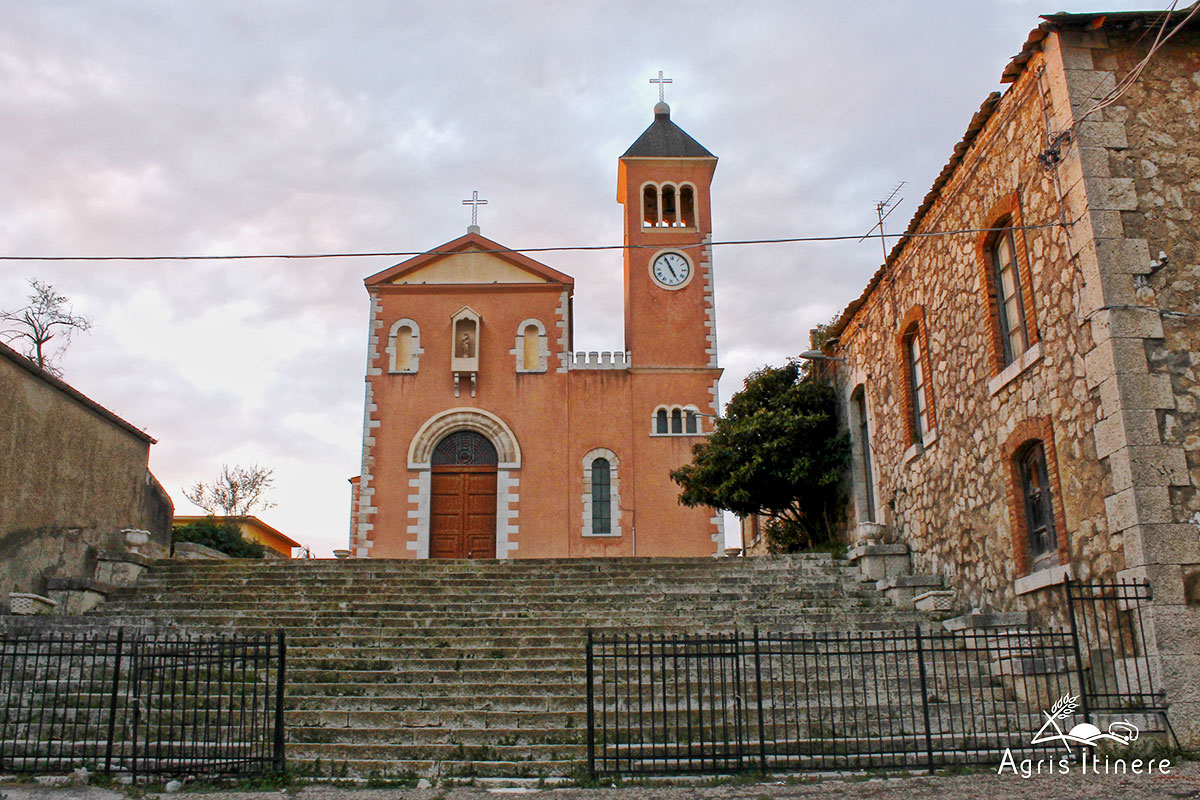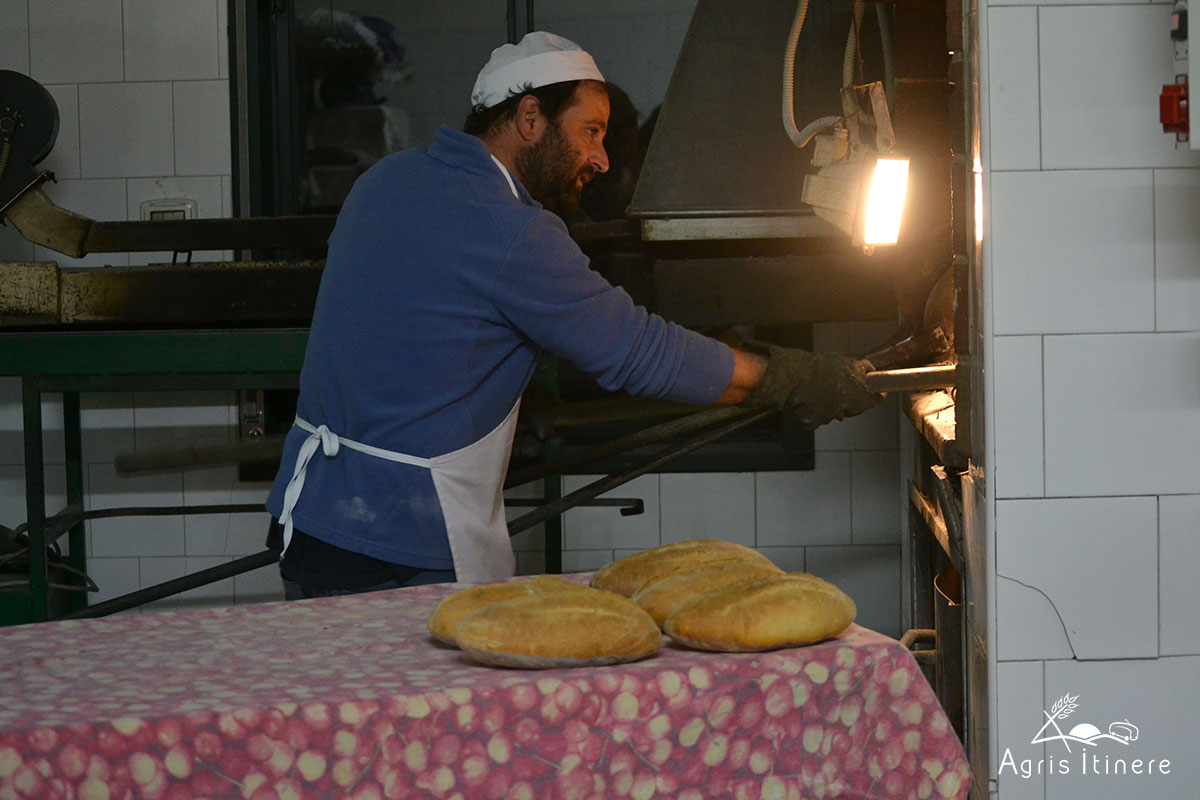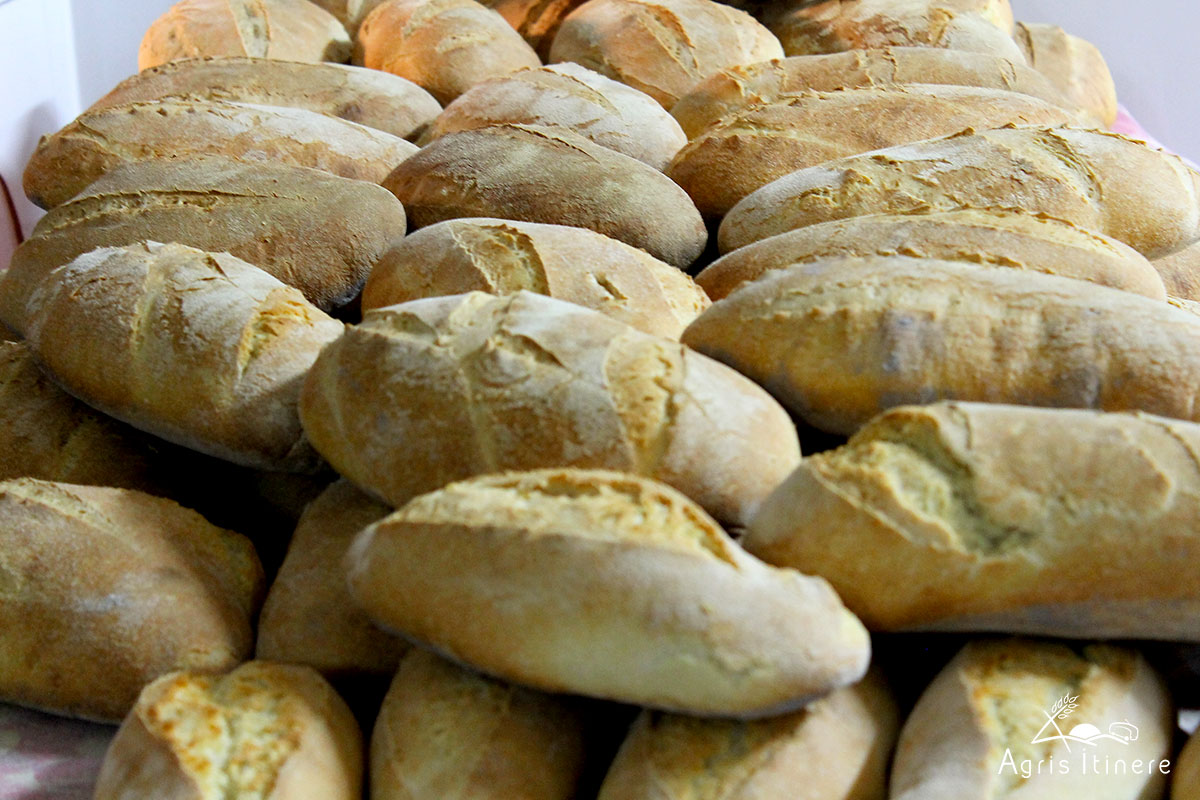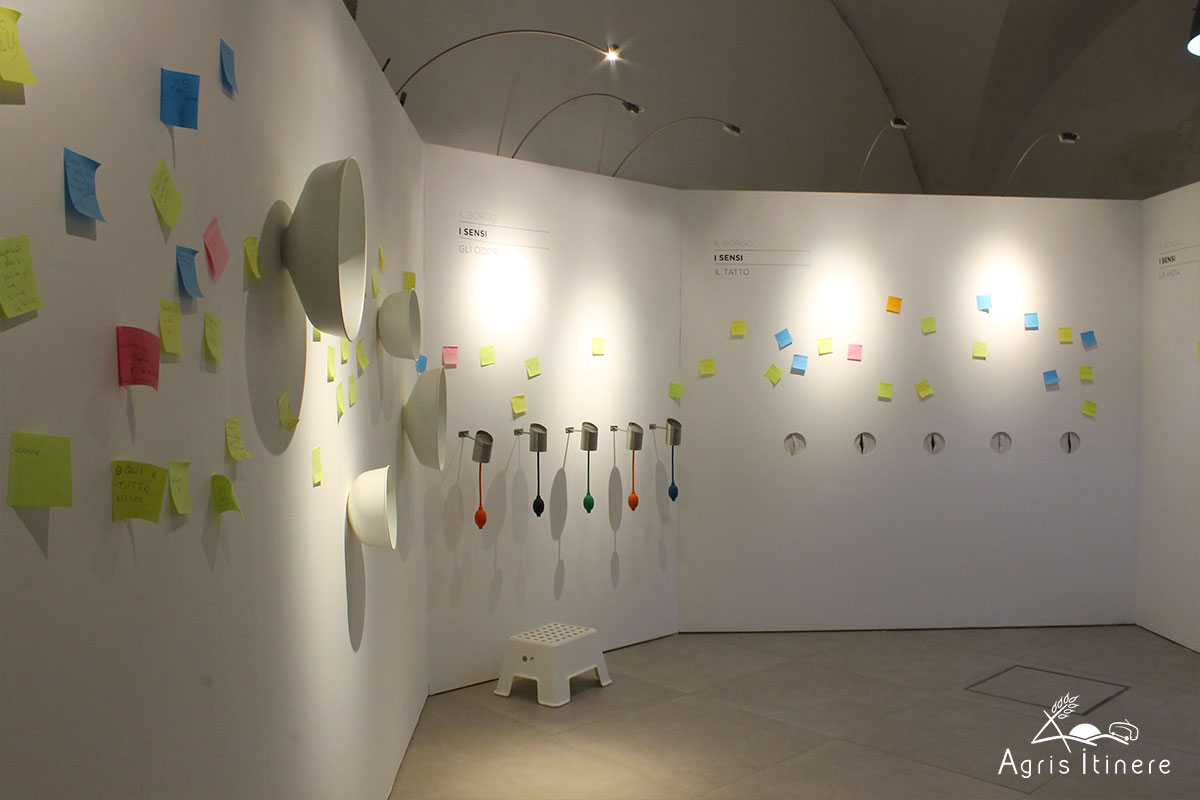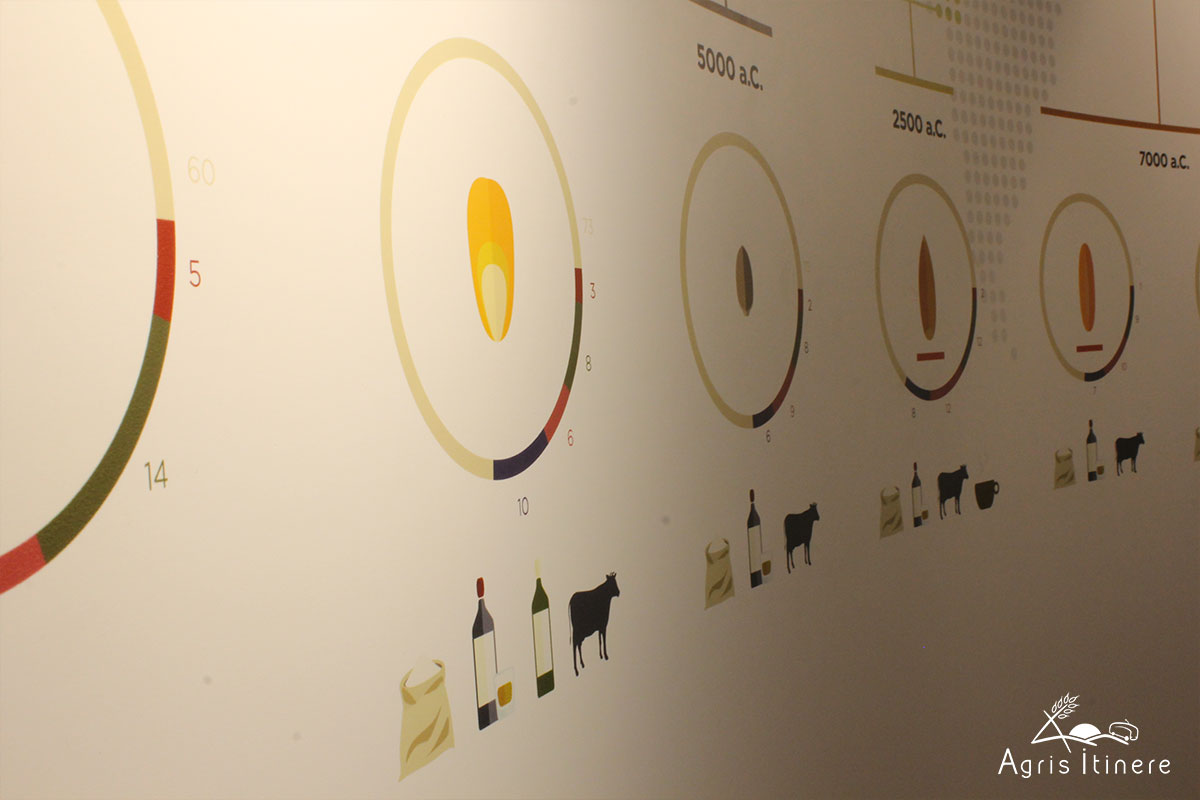Tour “Georgica”
FROM APRIL 1st TO MAY 20th 2017
DAY 1
ARRIVALS – CATANIA/COMISO
Arrival of participants in Catania/Comiso.
At 7.00 p.m. welcome cocktail and reception.
Introduction of the schedule.
Dinner and accommodation at the Hotel.
DAY 2
IN THE HEART OF THE ISLAND – THE VILLA DEL CASALE AND CALTAGIRONE
Arrangement in a private vehicle and departure for a guided tour of Villa Romana del Casale in Piazza Armerina, part of the Unesco World Heritage since 1997. It is one of the most important archaeological areas of Sicily, for its splendid mosaics that were discovered only in the late twentieth century. The city lies on three hills in the area of Erei, surrounded by a forest of pine and eucalyptus trees, a green oasis in the arid heart of the island. Transfer to a renowned farm for a tour and sample-tasting of typical products.
Continuation to Caltagirone. Rebuilt after the earthquake that destroyed it in 1693, it was revived in a late Baroque style that is expressed in original and wonderfully scenic forms, in its churches, palaces and fine eighteenth-century villas. For the exceptional value of its architectural heritage, in 2002 its historic centre was awarded the title of World Heritage Site by UNESCO, along with the other 7 Towns of Val di Noto. Caltagirone is known for the production of artistic ceramics. The most beautiful ones can be found on the steps of Santa Maria del Monte.
Transfer to Relais | Hotel for dinner.
Overnight stay.
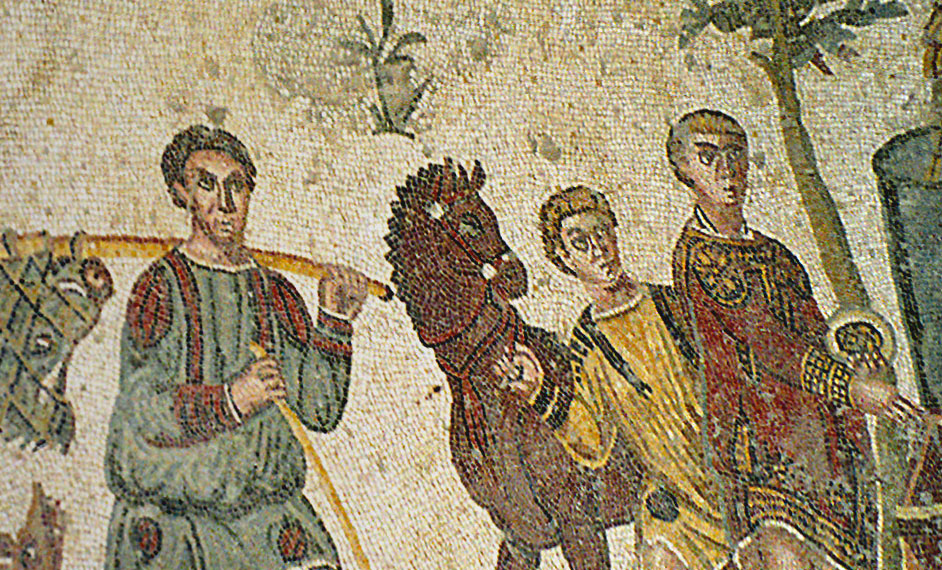
DAY 3
BAROQUE AND HERITAGE GRAINS – BORGO SANTA RITA AND NARO
After breakfast, arrangement in a private vehicle and departure for Borgo Santa Rita, where only five families permanently live there. The town was relaunched thanks to the idea of Maurizio Spinello, the “best baker of Sicily”, who opened a bakery in this town which has become a true excellence.
At the “Forno Santa Rita” bread is made using only heritage Sicilian grains, following ancient Sicilian recipes, using starter and baked in a wood oven.
In 2016, thanks to the recovery and redevelopment of the Baronial Palace, the Micromuseo Immateriale del grano e del pane (Intangible Micro-museum of wheat and bread) was created. A museum where it’s possible to become familiar with and rediscover the places, traditions and culture of the Town, a place of learning and preservation of the know-how of wheat and breadmaking.
Sample-tasting of the famous bread accompanied by olives, oils, cheeses and pizza, typical wines and beers produced in the area.
The afternoon will be dedicated to a guided tour of Naro. The town was at its peak during the seventeenth century, in the full Baroque period. During this period the city was enriched with remarkable monuments, whereby notable creative artistic geniuses worked on their construction. We will visit the church of SS. Salvatore, the church of San Niccolò di Bari, the Mother Church and the former Jesuit college, the church of Sant’Agostino, the church and former convent of San Francesco and finally the church of San Calogero.
Transfer to Relais | Hotel.
Dinner and overnight stay.
DAY 4
GENUINE SICILY – SANT’ANGELO MUXARO
After breakfast, arrangement in a private vehicle and departure for Sant’Angelo Muxaro, a small town with an ancient history, 30 km away from Agrigento, which stands on a solitary hill in the middle of the river Platani Valley.
Stroll along the quaint little town streets with stop-overs, sample-tastings and ENCOUNTERS. We’ll visit the dairy farm where we’ll taste typical cheeses produced daily by a local family, swing by the bakery and taste the “pani cunzatu” with local olive oil and pepper along with almond and honey biscuits, etc. and then stop by the local craftsman in his workshop to admire his work. It’s the story of a lesser Sicily as told through its people.
The stroll continues to the outside of the town to visit the Tomba del Principe (Tomb of the Prince): the largest tholos tomb in all of Sicily. Continuing, we’ll reach the foot of the hill and go down until we reach the cave of the Riserva Naturale Grotta Ciavuli: one of the most important specimens of Sicilian karst. Continuing through the olive, almond, pistachio and prickly pear trees, we’ll arrive at the southern ridge of the archaeological area where about 110 new graves were unearthed in 2007.
Using an old trail that farmers once travelled on with their mules and donkeys, we’ll return to the town, admiring scenic views of the Platani river valley and Monte Castello. Once in town, a buffet lunch prepared by the local families will be served to the guests in a courtyard.
Among the narrow streets of the small village of Sant’Angelo Muxaro, we’ll listen to the stories of the inhabitants themselves.
Return to Relais | Hotel.
Dinner and overnight stay.
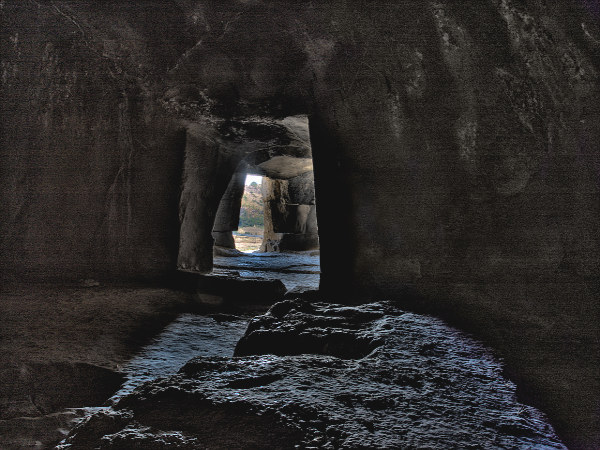
DAY 5
THE LEOPARD AND CONTEMPORARY ART – PALMA DI MONTECHIARO AND FAVARA
After breakfast, we load into a private vehicle and start off on the Leopard tracks to discover the magnificent monuments related to the Tomasi di Lampedusa family. Once in Palma di Montechiaro, our local guide will take us to visit the Chiaramonte Castle, the Ducal Palace, the Palace of the Piarists and the Benedictine Monastery, where you can taste the famous almond cookies prepared by the cloistered nuns with an ancient and secret recipe.
Transfer to Favara, along which a fundamental stop is the visit to the FARM CULTURAL PARK, an independent cultural centre, located in the heart of its historic centre, in a neighbourhood called “The seven courtyards” for its urban structure characterized precisely by seven small courts. Once almost abandoned, the houses have been transformed into contemporary art exhibition spaces, meeting spaces, open kitchens for workshops and lunches, a cocktail bar, vintage shops, and more. Favara has thus become the second tourist destination in the province of Agrigento, after the Valley of the Temples.
Among the Arab flavours and Sicilian dishes cooked on the premises of the FARM restaurant, you can enjoy a cocktail and buffet with local produce.
Continuation of the visit of the Castle Chiaramonte, and then a stop at the Ancient Foundation of the Antonio Mendola Library Museum, among the baroque treasures of the Church of the Most Holy Rosary, including the recovered lanes in some parts of the city centre.
Return to Relais | Hotel.
Dinner and overnight stay.
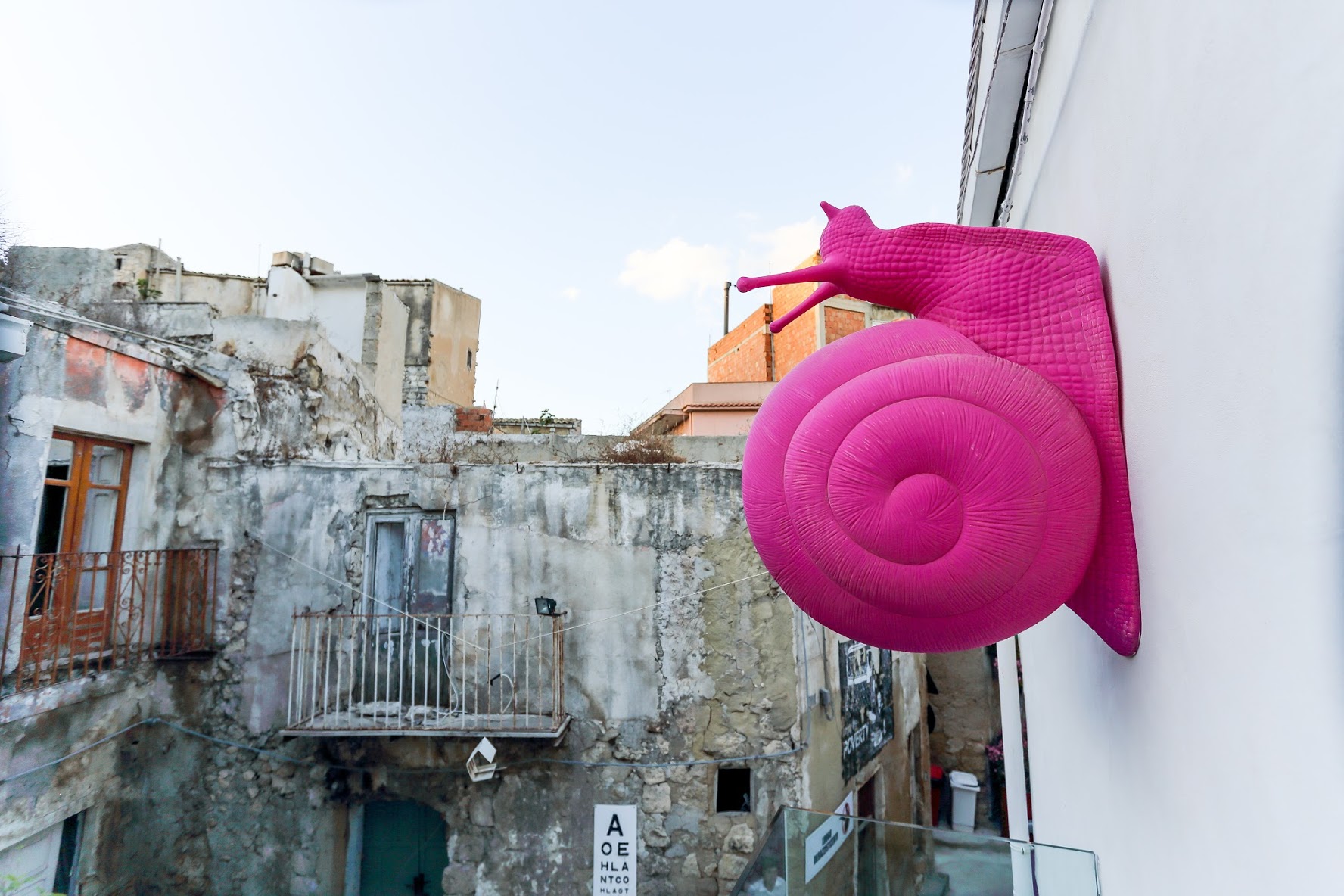
DAY 6
I FRUTTI DELLA TERRA – CAMPOBELLO DI LICATA
Dopo la colazione, sistemazione in automezzo privato e partenza per Campobello di Licata, piccolo centro agricolo dell’entroterra agrigentino che ha saputo esprimere i valori della civiltà contadina ad alti livelli ed in maniera trasversale. Li ha espressi artisticamente Silvio Benedetto nei murales del Palazzo di Città e nelle sculture di Piazza XX Settembre e di Piazza Tien An Men e lo hanno espresso nel lavoro dei campi e nell’allevamento molte aziende agricole famose in ogni parte del mondo e che vantano riconoscimenti prestigiosi: le Cantine Baglio del Cristo di Campobello, Azienda Agricola Vini Milazzo, Azienda Agricola Montalbo, solo per citarne alcune.
Dopo un Tour alla scoperta delle opere di Silvio Benedetto, la nostra guida locale ci farà conoscere ed apprezzare le aziende agricole Baglio del Cristo di Campobello e Azienda Agricola Montalbo.
La Cantina Baglio del Cristo di Campobello nasce dalla visione di un nuovo percorso enologico, alla ricerca della qualità assoluta. Con la consapevolezza di avere le risorse giuste, il luogo adatto, uno straordinario microclima e le persone qualificate, prende così vita l’idea del Baglio del Cristo di Campobello. Le vigne dei Bonetta sono curatissime. Si trovano tutte intorno al bellissimo Baglio, sulle basse colline di matrice calcareo/gessosa di questa porzione dell’agro di Campobello di Licata, dove la brezza rinfrescante del Mediterraneo arriva la sera proprio dal versante rivolto verso Licata.
Nell’Azienda Agricola Montalbo, si allevano le capre autoctone dell’Agrigentino che hanno rischiato l’estinzione nonostante l’ottima qualità del loro latte. Stiamo parlando della particolare capra Girgentana dalle lunghe corna a spirale, il cui delicato latte, con grassi e proteine equilibrati, è particolarmente digeribile e da sempre consigliato per l’alimentazione di bambini e anziani. Da questo buon latte coagulato con caglio vegetale (fico, carciofo e cardo) di produzione propria, l’azienda prepara diversi tipi di formaggi: dal Girgenti classico alle caciotte, sia fresche sia a media stagionatura, a crosta fiorita, a pasta erborinata, sotto cenere (di legno di mandorlo), alle ricotte salate e al forno. Da non perdere le robiole, sia al naturale che aromatizzate in mille modi: pepe nero, bianco o rosa, pistacchio o cannella, fino alla torta cipollina (robiola stagionata con erba cipollina e aglio). Da conoscere infine la Tuma ammucinata, ripresa da un’antica ricetta siciliana, in cui il formaggio caprino viene immesso nel gesso liquido e stagionato a temperatura ambiente.
Durante la visita degusteremo i vini ed i formaggi delle due aziende in una colazione che sarà animata dal racconto di un Cantastorie che ci intratterrà con canti popolari tipici della nostra tradizione contadina.
Trasferimento presso i locali del Ristorante LA MADONNINA per un “COCI E TASTA” (la nostra cooking class in siciliano) con lo chef Giovanni Gruttad’Auria.
Si preparerà un pranzo con prodotti autoctoni e ricette tipiche della nostra zona.
Rientro al Relais|Hotel.
Cena libera e pernottamento.
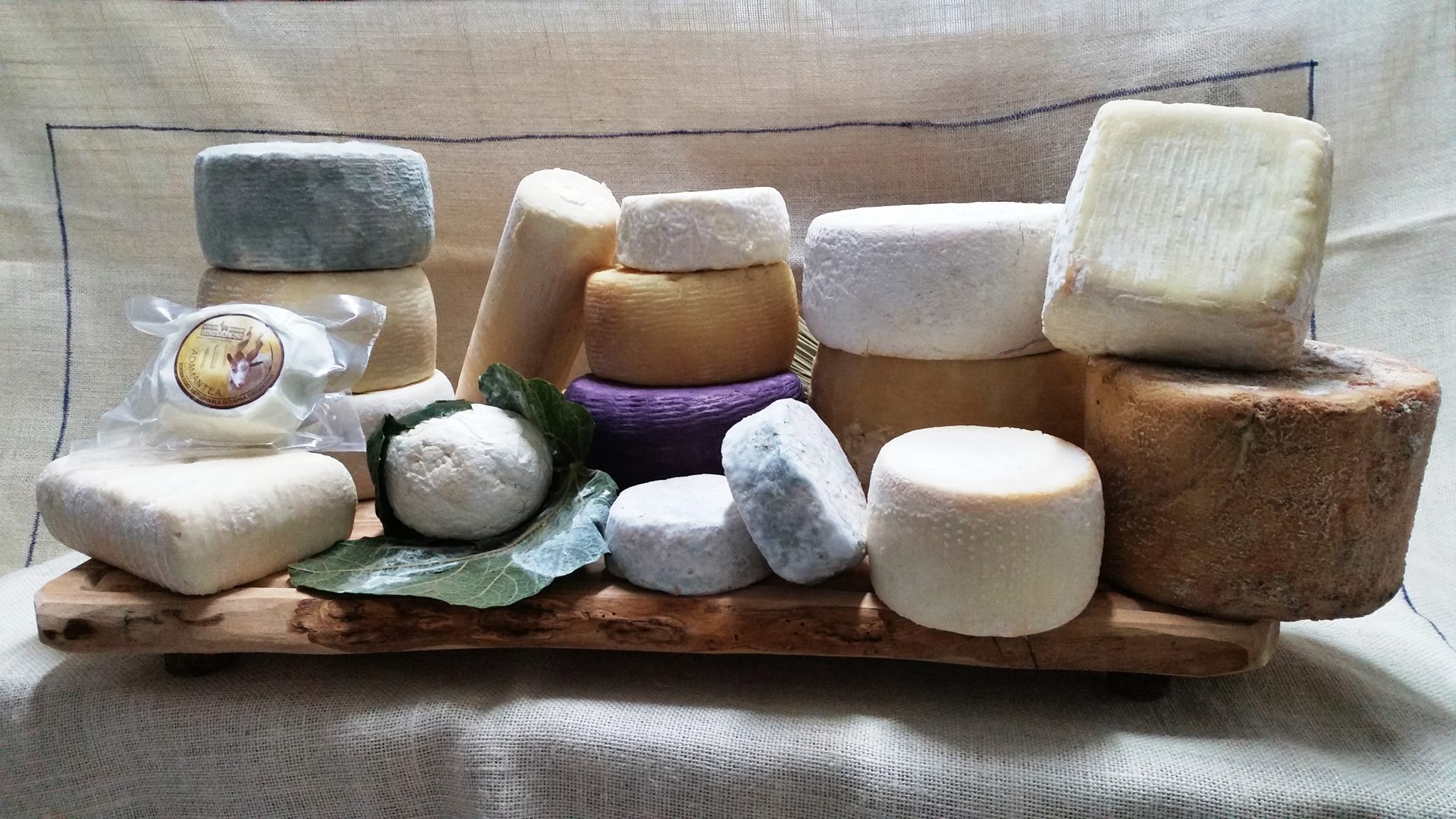
DAY 7
CULTURE, ENVIRONMENT, AND TRADITIONS – VALLEY OF THE TEMPLES, KOLYMBETHRA GARDEN AND STAIR OF THE TURKS
After breakfast, we load into a private vehicle and depart for the Valley of the Temples, which is one of the most fascinating archaeological sites in Sicily. It is located in an extraordinary context of harmony between nature and ancient landmarks, including the remnants of the ancient Greek colony of Akragas. At this site, declared a World Heritage Site, the Doric temples of the fifth century BC in tuff sandstone shine with a warm amber, especially lit at dusk, while in winter and spring the contrasts between the colour of the stones and the green fields leaves visitors literally breathless. Along the “Via Sacra” you can admire the Temple of Hercules, the Temple of Concord, and the Temple of Juno.
Between the temple of Castor and Pollux and that of Vulcan, there is a vast green area known as the “Garden of Kolymbethra”, which offers a wide variety of trees and landscapes. In the most rugged areas are species typical of the Mediterranean, such as myrtle, the mastic tree, the oak, the mock privet, the spurge, and the broom. In the plain of the valley bottom, beyond the small river lined with reeds along which grow willows and white poplars, stretches the citrus grove of ancient varieties of lemons, mandarins, and oranges and irrigated using the techniques of Arab tradition. In the areas the water doesn’t reach, mulberry trees, carob trees, prickly pear, almond and gigantic “Saracen” olive trees spring up.
Eating a “Rustic Country Basket” in the shadow of the majestic trees of the garden.
In the afternoon, visit the Stair of the Turks near Realmonte, a spectacular cliff of limestone shaped terraces that look like imposing stairs upon which small, wild, white beaches are found.
Return to Relais | Hotel.
Dinner and overnight stay.
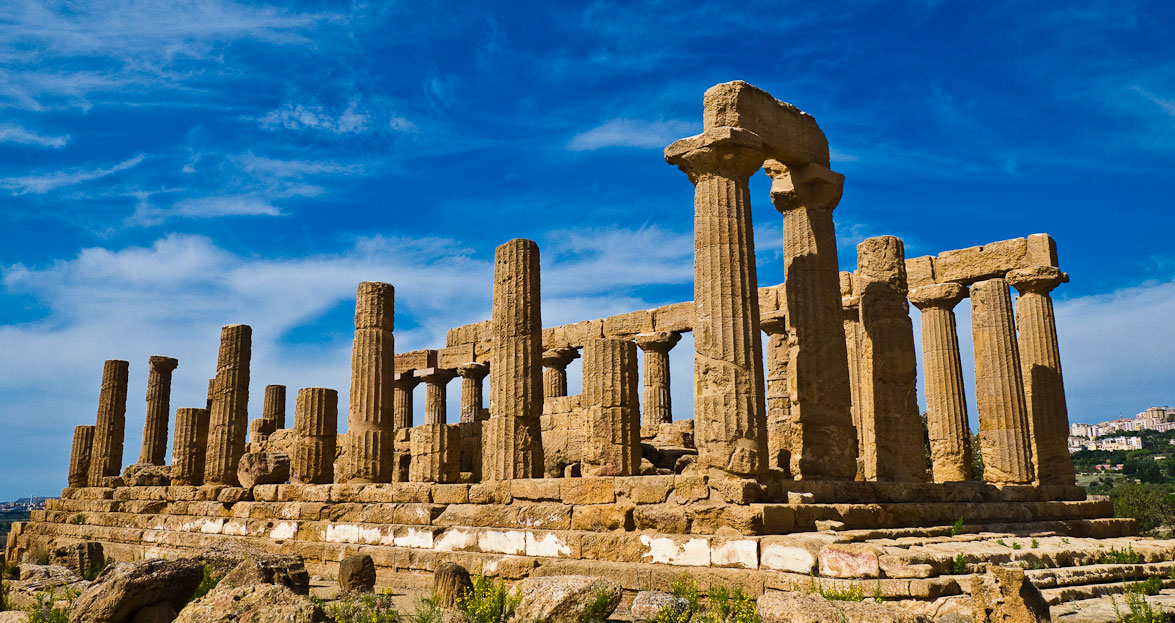
DAY 8
BAROQUE AND CHOCOLATE – MODICA AND RAGUSA IBLA
After breakfast, load into a private vehicle and transfer to train stations in Canicattì or Campobello di Licata (depending on accommodation) and depart for eastern Sicily, to discover the Late Sicilian Baroque, whose heritage, both for its importance and beauty, is a UNESCO World Heritage Site.
Guided tour of Modica, which stretches from the rocky outcrop up to the valley floor. The most striking element of the cityscape is the Cathedral of St. George, located near the top of Modica. Besides staircases, narrow alleys, and picturesque streets with old shops, Corso San Giorgio connects the high side to the low side, running along one of the highest bridges in Europe whose pillars reach 120 m in height.
We will visit the oldest Sicilian pastry shop, where you can taste the famous chocolate of Modica, the recipe for which comes from the ancient Aztecs. Modica chocolate is special and very unique thanks to the lack of cocoa butter; in fact the only ingredients are cocoa and sugar.
Lunch at an exclusive restaurant.
Transfer to Ragusa Ibla, whose destiny, like that of other centres of southeastern Sicily, is linked to the 1693 earthquake. It was following this catastrophic event that the reconstruction of the city began, transforming it in the late baroque jewel that still is today. Although its appearance is decidedly baroque, churches and palaces are arranged along the old medieval system.
Transfer to Hotel in Catania/Comiso.
Dinner (not included).
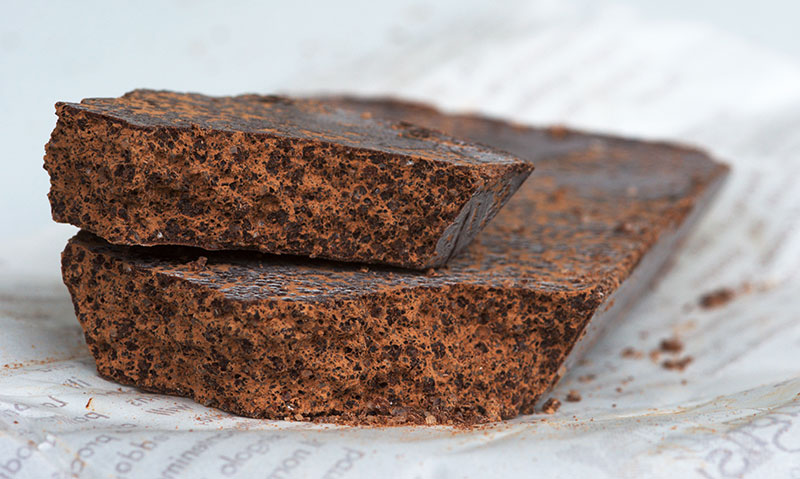
Interested in this tour?
Need more details? Do you want to customize the tour? Contact us.
Festival and celebrations
Festivals and celebrations that you can take part in during the tour:
- Pashket, Celebrazioni della Pasqua Bizantina a Piana degli Albanesi from april 9 to 16
- Settimana Santa e Pasqua a Enna from april 9 to 16
- Processione dei Misteri a Trapani, il Venerdì Santo on april 14
- Pasqua a Naro from april 9 to 16
- Festa di Sant’Angelo a Licata from may 5 to 6
- La Sagra del Carciofo di Ramacca from april 1 to 10
- Sagra ‘Mpurnatu e ‘Mpanata a Campobello di Licata on april 22 and 23
- Festa dei Fiori ad Acireale from april 23 to 25
- Sagra della Seppia a Donnalucata from april 23 to 25
- Festa Medievale di Primavera a Montalbano Elicona on april 24 and 25
- Archi di Pasqua a San Biagio Platani in april
- May 1 alla Kolymbetra
- Primavera Barocca ed Infiorata di Noto may’s 3rd sunday
- Rappresentazioni Classiche a Siracusa from may 13 to june 26
- Sagra del Tataratà a Casteltermini may’s 4th sunday

